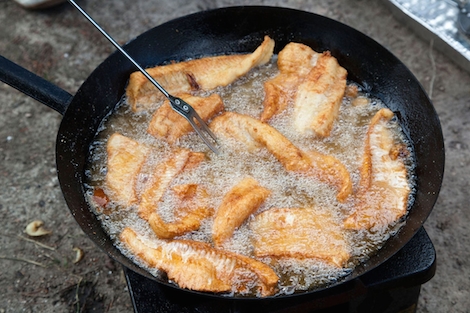
Fishermen heading north to Ontario's Algoma Country have lots of reasons for wetting a line.
Sport, fellowship, adventure and bragging rights are just some of the good reasons to plan a fishing trip in Algoma Country.
Just as important as catching fish, the always popular "fish fry" has motivated countless anglers to keep a few for the table.
THE GREASE
Not all cooking oils are ideal for frying fish.
The best options are vegetable oils that have an exceptionally high flash point, or what some cooks call a "smoke point".
The smoke point of cooking oil is the temperature at which the grease starts to vaporize and is in jeopardy of bursting into flames.
This temperature varies from 360 to about 510 degrees depending on the oil in question.
Safflower, peanut and corn oil are among the best options for frying fish because these oils all have a very high flash point.
Oils to be avoided for frying include: butter, margarine, olive oil and believe it or not lard or animal fat.
The ideal frying temperature for fish is about 375 degrees and the best way to maintain this temperature is with the help of a grease thermometer, available anywhere cooking supplies are sold.
CAST IRON
A cast iron pot isn't the only way to fry fish, but it most certainly is one of the best options.
Cast iron transfers heat better than other frying pan types, eliminating hot and cold spots in the grease.
This goes double when frying over an open fire as a heat source.
- Mark Romanack
Read the full article on how to master the campfire fish fry.